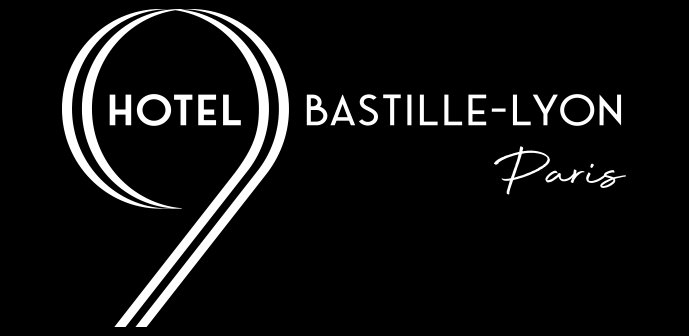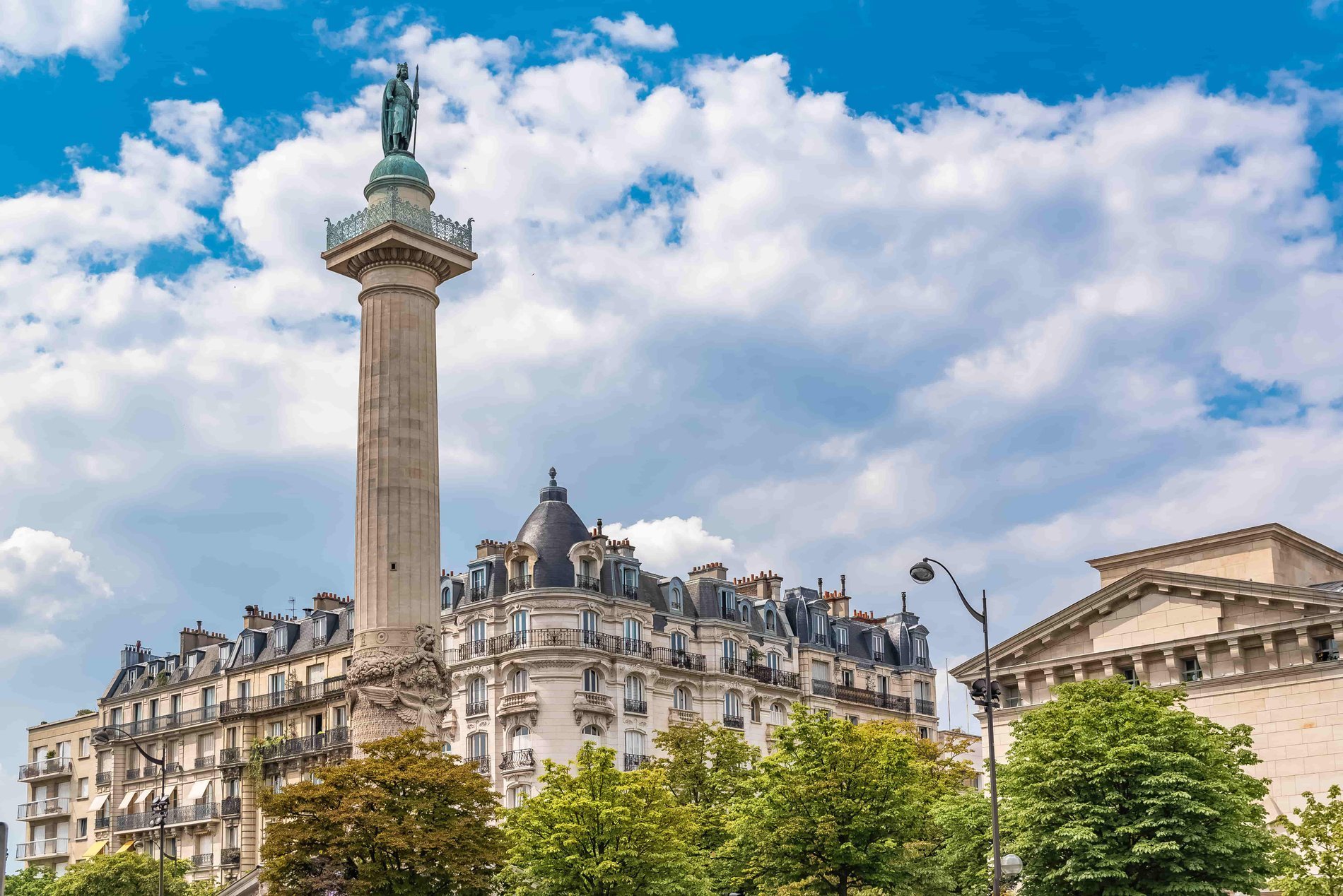9Hotel Bastille-Lyon, Just Steps from Place de la Nation in Paris
A Well-Located Hotel Near Place de la Nation
Just a short walk from Place de la Nation, a square steeped in history, 9Hotel Bastille-Lyon enjoys a prime location. Formerly known as Place du Trône, it is one of the most important squares in Paris and lies just a few hundred meters from Place de la Bastille. Redesigned multiple times over the centuries, it has recently been largely returned to pedestrians and cyclists thanks to the urban policies of Paris mayor Anne Hidalgo, creating a more social and green urban space.
From Place du Trône to Place de la Nation
Situated along the road connecting Paris to Vincennes, the square was originally named Place du Trône ("Throne Square") in honor of the throne erected on August 26, 1660, to welcome King Louis XIV and his young bride Marie-Thérèse of Austria, who made a grand entrance upon returning from their royal wedding in Saint-Jean-de-Luz.
At that time, the area was nothing more than meadows and farmlands on the outskirts of Paris, dotted with farms, convents, and vineyards. The Fermiers Généraux Wall, which served as the city’s tax boundary, had recently been extended beyond this point, incorporating the current Place de la Nation—then a vacant lot—into the city.
On August 10, 1792, during the French Revolution, the square was renamed Place du Trône-Renversé ("Toppled Throne Square"). It would soon become a gruesome site, as a guillotine was erected there on June 13, 1794, claiming more than 1,000 lives in just a month and a half. The victims’ remains were buried in mass graves in the nearby Picpus Cemetery.
It wasn’t until July 14, 1880, during the celebration of France’s first national holiday, that the square officially received the name Place de la Nation.
A Square That Has Evolved Over Time
Now located at the border of Paris’s 11th and 12th arrondissements, Place de la Nation has seen many transformations over the centuries. Originally outside the city walls, it became part of Paris in the 17th century.
In 1669, to commemorate the royal procession to Place du Trône, Colbert, Louis XIV’s minister, commissioned a triumphal arch, awarding the project to Claude Perrault. The design included a massive equestrian statue of the king atop a 50-meter-high monument with three openings and Corinthian columns. Construction began in 1670, but was halted, and the unfinished structure was eventually demolished in 1716.
Later, in 1787, architect and urban planner Claude-Nicolas Ledoux erected two columns flanking the city’s tax gate and the entrance to the Cours de Vincennes. Statues of Philip Augustus and Saint Louis were added atop the columns in 1845. Napoleon III also intended to build a triumphal arch on the square, but his plans never came to fruition.
Instead, the Triumph of the Republic monument now stands at the center of the square. Commissioned in 1879 by the city of Paris from sculptor Aimé-Jules Dalou, the statue was inaugurated in plaster in 1889 to commemorate the centenary of the French Revolution, and in bronze in 1899.
The monument depicts the Republic standing tall on a chariot drawn by two lions, surrounded by allegorical figures including the Genius of Liberty, a blacksmith representing Labor, Justice, and Abundance, who sows the seeds of prosperity. Children surround the ensemble, symbolizing hope and the future.
A Contemporary Urban Landmark
During Anne Hidalgo’s term as mayor, Paris undertook the “reinvention” of seven major public squares, including Place de la Nation. Previously described as “more of a roundabout than a true square,” the area has been transformed into a pedestrian-friendly and welcoming space, where green areas have been doubled.
The square’s layout has been rebalanced in favor of pedestrians and cyclists, at the expense of car traffic. The central island is now broader, planted with grass and over fifty new trees, offering shade and a breath of fresh air to passersby—bringing a hint of the countryside to the heart of Paris.
As a historically and geographically central point of the city, Place de la Nation is a major hub from which several key avenues radiate, including Avenue du Trône, Boulevard Diderot, Boulevard Voltaire, and Avenue du Faubourg Saint-Antoine. It is served by four metro lines, one RER line, and numerous bus lines.
From a Throne to a Fairground
The Foire du Trône, France’s oldest fair and Europe’s largest funfair, takes its name from the square’s former title. First held in 957 during Holy Week at Saint-Antoine Abbey, which once occupied part of today’s Place de la Nation, the fair was moved after the abbey’s destruction during the French Revolution.
Since 1965, the Foire du Trône has taken place on the Pelouse de Reuilly, not far from Place de la Nation, keeping alive the memory of the square’s historic name.
From Place de la Nation, you are also within close reach of the famous Père Lachaise Cemetery, the Bois de Vincennes, and its remarkable zoological park. There is so much to explore for those who enjoy wandering the city and discovering the richness and diversity of Parisian life.


